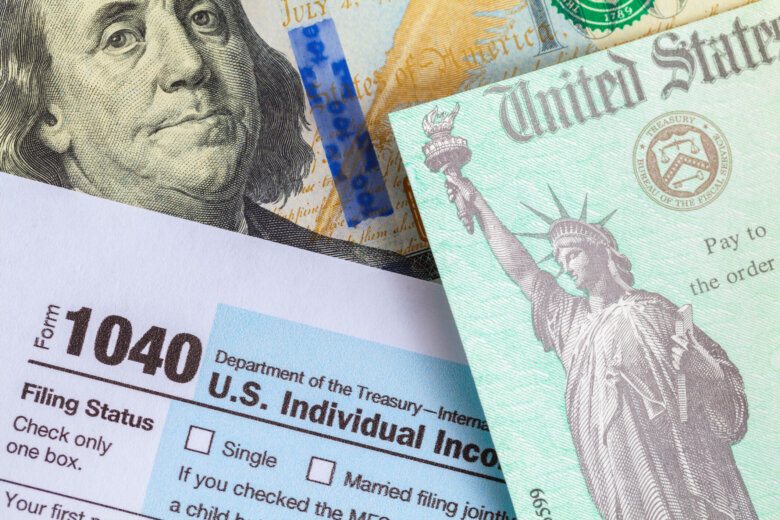
Most taxpayers receive a tax refund, and maximizing that refund is always useful. But this year, taking those steps may be particularly important.
Many families accustomed to a sizable refund may be surprised to see their refund reduced or eliminated because they already received advance child tax credit payments in 2021, for example. Other factors reducing your refund may include large capital gains earnings and paused student loan payments.
To get the biggest refund possible this year, taxpayers may need to go the extra mile by leaning on lesser-known deductions and 2021-exclusive tax benefits created as a result of the coronavirus pandemic.
Last year, the IRS issued nearly 122 million refunds, according to its website, totaling more than $736.2 billion. A refund is typically issued based on your taxable income in cases where you’ve paid or withheld more than you owe.
Maximize your tax refund in 2021 with these strategies:
— Properly claim children, friends or relatives you’re supporting.
— Don’t take the standard deduction if you can itemize.
— Deduct charitable contributions, even if you don’t itemize.
— Claim the recovery rebate if you missed a stimulus payment.
— Contribute to your retirement or other qualified plans.
— See if these lesser-known credits could apply to you.
Claim dependents
The child tax credit and the child and dependent care credit are both substantially larger this tax season than in previous years, so it’s particularly important for families to properly claim dependents.
The American Rescue Plan Act raised the child tax credit amount from $2,000 in 2020 to $3,000 per child or $3,600 per child under age 6 in 2021. Some families may have already received half of their credit in the form of an advanced payment, but others may still receive it as a refund if they opted out or had not previously claimed a dependent child in prior years.
In addition, for 2021 only, the child and dependent care credit increased to $8,000 for one qualifying individual or $16,000 for two or more qualifying individuals. This credit can apply to children under age 13 or individuals who are physically or mentally incapable of self-care. In combination with the third economic impact payment, which included $1,400 for each qualifying dependent, families, and particularly those with a newborn, may receive a sizable refund.
“A lot of individuals with children who qualify were receiving these payments from July through December, so it’s going to be something new for them. Now what they need to do when they file their tax return this year is actually reconcile those payments,” says Mark Jaeger, vice president of tax operations at TaxAct. Because the IRS would not have had information about new births to provide advanced payments, he says, “Individuals who had babies in 2021 are going to see a big windfall.”
Don’t take the standard deduction
If your itemized deductions are larger than the standard deduction, be sure to itemize on your return.
The Tax Cuts and Jobs Act of 2017 nearly doubled the standard deduction in 2018 through 2025, so this threshold may be challenging to meet. But when possible, lean on deductions like the charitable contribution deduction, the mortgage interest tax deduction and the medical expense deduction to exceed the standard deduction.
“If you’re a single person with a relatively large mortgage, you’re in more of a position to itemize,” says Jerry Zeigler, an enrolled agent and SaverLife financial coach. “Also, make sure you track all of your charitable contributions.”
Deduct charitable contributions
Nonitemizers can also deduct charitable contributions, thanks to temporary expansion measures put in place by the Taxpayer Certainty and Disaster Tax Relief Act of 2020.
Individuals who claim the standard deduction can also claim a limited deduction of up to $300 for cash contributions made to qualifying charities in 2021 and $600 for married individuals filing joint returns.
Claim the recovery rebate
Those who did not receive their third stimulus payment in 2021 or did not receive a plus-up payment may be eligible for a recovery rebate credit when they file their 2021 return. If you received an inaccurate stimulus payment, any amount owed to you could be included in your refund.
Contribute to your retirement
The calendar year is up, but it’s not too late to make a 2021 contribution to your traditional IRA and receive a deduction of up to the contribution limit of $6,000. Actual contribution and deduction limits depend on your adjusted gross income.
Taxpayers have until the filing deadline to make a contribution.
Use lesser-known credits
Take stock of your year and consider whether any additional tax credits may apply to your situation. You may be eligible for credits like the adoption tax credit, the earned income tax credit or the federal solar tax credit.
“One that’s frequently missed by homeowners is what they called the nonbusiness energy credit. Basically that’s when you have energy-efficient items that meet a certain rating. It’s not a big credit and the calculation changes for different items, but there’s a lifetime limit of $500,” Zeigler says. “There’s also the solar credit, which for 2021 it was 26% and there’s no limit, and a few other energy credits.”








